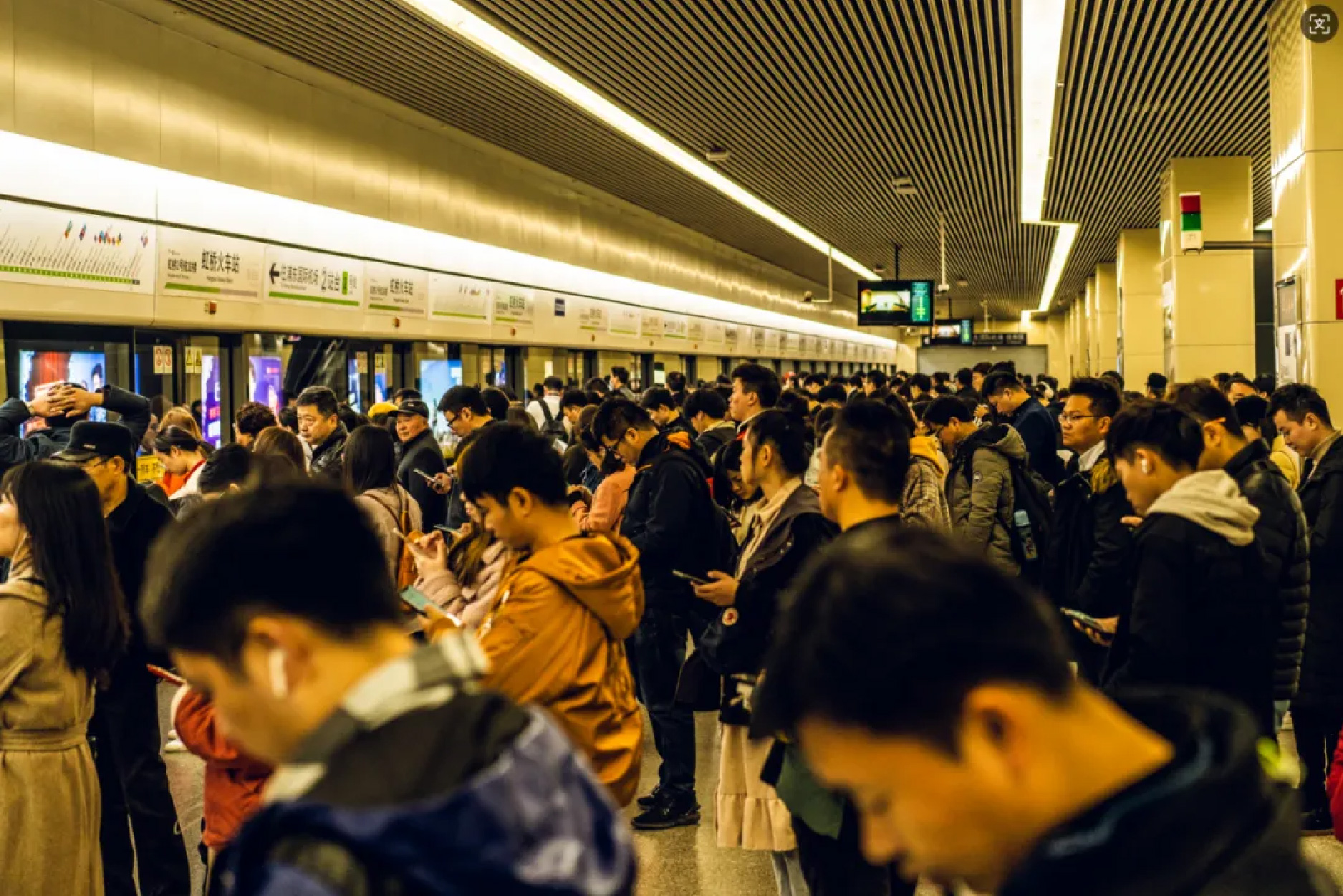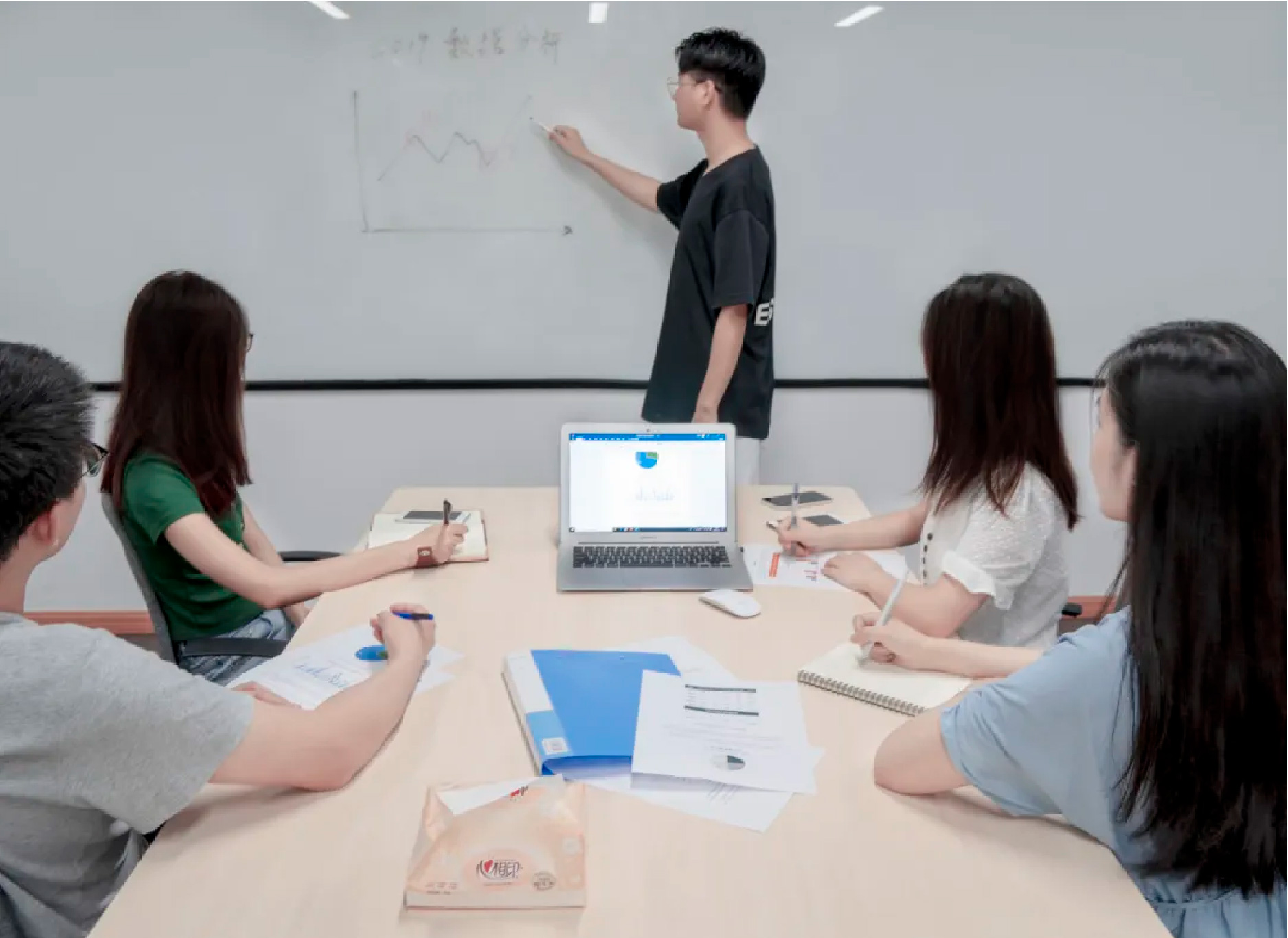Since the beginning of 2025, several well-known Chinese companies have introduced “anti-involution 反内卷” measures one after another.
What is “内卷” (nèi juǎn)?
Literally meaning “inward rolling” or “turning inward,” the term describes a situation where individuals or organizations engage in excessive, often self-defeating internal competition. Everyone works harder and longer, yet productivity, innovation, or rewards do not meaningfully improve. 内卷 is often translated into English as “involution,” reflecting the sense of being trapped in a cycle of diminishing returns, like running endlessly on a treadmill.
For example, Haier has eliminated unnecessary overtime and “performative” attendance; Midea has banned after-hours meetings and ritualistic overtime; and Lenovo has published a post opposing wasteful internal competition. The term “anti-involution” has frequently topped trending lists, generating widespread debate.
The 2025 Government Work Report emphasizes the need for a thorough elimination of "involution-style competition" and specifies the necessity of protecting workers rights to rest and paid leave. It also states that illegal extensions of overtime are not permitted.
Professor WANG Xiaoyi, Assistant Dean at ZJUSOM, provided an analysis of the issue from a branding perspective in an interview with National Business Daily. He stated that "anti-involution" should not be equated with "lying flat"; instead, it represents a practical approach to enhancing brand value.
|
WANG Xiaoyi | 王小毅 School of Management, Zhejiang University |
||
|
|
||
|
|
|
Academic Background: Wang Xiaoyi is a professor and doctoral supervisor at the Department of Marketing, School of Management, Zhejiang University. He is also the Assistant Dean of the School of Management and Deputy Director of the Neuromanagement Laboratory at Zhejiang University. His research areas include brain-computer intelligence, consumer neuroscience, and innovations in new consumption and circulation. You can learn more about Prof. WANG Xiaoyi’s academic background here |
|
“Anti‑Involution” Re‑shapes the Employer Brand: An Exercise in “Brand‑Value Up‑Scaling” |
|
“ |
‘Anti-involution’ is the shared choice of many renowned companies because it is not just about elevating efficiency but also about elevating brand value—it will reshape the employer brand,” says WANG. It marks a paradigm shift from efficiency-driven to humanvalue-driven employer branding. |
How exactly does it reshape the employer brand?
Prof. WANG highlights three core logics:
01 | From the "working hours race" to "effectiveness first," Haier, Midea, and others have eliminated unnecessary overtime and improved efficiency through process optimization and digital management. This shift sends a clear message of "respecting scientific management" and challenges the misconception that "involution equals hard work."
02 | Heytea has shifted from "scale expansion" to "value deepening." The company has paused franchising and rejected price wars, now focusing on product innovation and health positioning. Its employer brand has been upgraded in tandem with becoming an "innovation-driven organization," attracting talent that values long-term growth.
03 | Upscaling of cultural symbols. Anti-involution measures spread through employee word-of-mouth. Haier’s statement against clock-in formalism concretized corporate values into a symbol of “respect for humanity,” creating unique cognitive assets.

|
Image source: ©千库网 |
Beyond that, WANG sees three additional facets of brand up‑scaling embodied in “anti‑overtime” initiatives:
■ Value upscaling: Competing on value created per unit time rather than sheer hours, redefining the “output‑per‑head” metric.
■ Emotional upscaling: Flexible hours and mental‑health support build “employees‑first” resonance, lifting the employer brand from a “cold efficiency machine” to a “warm career partner.”
■ Ecosystem upscaling: Meituan’s fatigue‑prevention and traffic‑allocation reforms foster win‑wins across the platform, extending the employer brand to the entire value chain.
Clearly, far from slowing a company down, anti‑involution measures can refresh brand image and generate positive returns.
|
Excessive “Anti‑Involution” Can Slide into “Lying Flat”; Finding the Balance Is Crucial |
On 12 March Lenovo posted:
|
“ |
The Nights Here Are Quiet,” noting: “No clock-in, flexible work; we don’t prescribe a set finishing time. That doesn’t mean encouraging ‘lying flat’; real competitiveness comes from tech innovation, not meaningless internal friction.” |
Indeed, most anti-involution strategies aim not to reject competition but to eliminate wasteful friction, stripping out redundant, non-value-adding tasks so employees can focus on core projects. But, warns WANG, amid fierce market rivalry, badly balanced anti-overtime policies could still breed a “lying flat” mindset. The task is to find a new equilibrium between efficiency and humane management.

|
Image source: ©千库网 |
How to strike that balance?
WANG proposes a “double-helix growth model” – the co-evolution of employee well-being and business efficiency – and offers the following practical steps:
Institutional safeguards:
■ Flexible-boundary management: Adopt “core hours + self-managed time” (e.g., Microsoft Japan’s four-day workweek pilot boosted productivity 40%). Formalise a “right to disconnect.”
■ Health investment: Count staff counselling expenses as R&D spend, improving benefits while enjoying tax incentives.
Technology enablement:
■ AI-driven job-matching: Map employee capabilities via big data to craft personalised development paths and cut wasteful toil.
■ Digital efficiency tools: Use process-automation and intelligent agents to free staff from repetitive tasks for creative work.
Cultural reconstruction
■ Leadership paradigm shift: Move managers from “overseers” to “enablers” (e.g., Haier’s “Rendanheyi” model gives employees decision rights).
■ Cultivate meaning: “Strategy-decode workshops” help staff see how their tasks link to company mission.
Ecosystem collaboration
■ Value sharing along the chain: Meituan couples merchant-service upgrades with rider-rights protection—algorithm fairness brings multi-party gains.
■ CSR leverage: Include employee rest rights in ESG ratings to attract values-driven investors.
To aid firms further, WANG frames a new brand-competition paradigm: the “VALUE+” model:
V – Vision-driven: Innovation led by mission, replacing low-level repetition (e.g., BYD’s persistence in new-energy tech).
A – Algorithmic Empathy: Data insights into deep employee/user needs for precise value delivery (e.g., Netflix’s culture algorithm).
L – Lifestyle Integration: Embed the brand in every lifestyle scene, surpassing functional competition.
U – Uncertainty Absorption: Build antifragile systems that turn market volatility into innovation opportunities.
E+ – Ecosystem+: Create a symbiotic ecosystem where employees, customers, and partners co-create brand value.
|
“ |
The essence is to move the brand from a ‘red ocean of competition’ to a ‘blue ocean of value’ and build an uncopyable edge,” WANG says. “Using this model, firms can pinpoint the balance between efficiency and humanity.” |
In the “Anti-Involution” Era, Enhancing Brand Value Requires Strategy
Anti-involution can reshape employer brands and lift value, but joining the bandwagon does not guarantee ideal outcomes.
Employer branding has hard elements (e.g., competitive pay - Huawei’s “Genius Youth” salaries; career tracks - Tencent’s dual-channel promotion) and soft elements (cultural resonance - Alibaba’s “New Six Vein Sword” values; experience design - flex hours, family days; social value - BYD’s green tech attracts talent). Effective brand upgrading, WANG stresses, needs strategic finesse, not blind anti-involution.
|
Drawing on his latest research, he offers three integrated strategies |
1. Value Anchoring
It is necessary to establish a differentiated expression of the “Employee Value Proposition (EVP).” For instance, technology-driven enterprises should emphasize “shaping the future with top talent” to enhance employees’ sense of professional pride.
Consumer brands should highlight the “coexistence of product innovation and employee creativity.” In this regard, the team empowerment experience behind Heytea’s “Super Plant Tea” product line offers valuable insights.

|
Image source: ©千库网 |
2. Content Co-Creation
Employees should be encouraged to share authentic work scenes on social media. For example, companies can plan and produce videos showing a day in the life of an employee, embedding an “anti-involution” narrative that resonates with Generation Z’s values.
3. Institutional Innovation
There is a need to innovate performance evaluation systems and establish antifragile mechanisms. For example, replacing KPIs with OKRs to reduce the emphasis on working hours; setting up an “innovation tolerance fund” to encourage breakthrough attempts (as seen in Huawei’s creation of the “Blue Army Department”).
|
“ |
In short, ‘anti-involution’ relates not only to the elevation of brand value but also to the protection of employee rights. Only by advancing ‘anti-involution’ with strategy can an employer truly reshape its brand image and achieve long-term brand value enhancement,” said WANG Xiaoyi. |
China is now at a pivotal moment in its journey toward innovation-led, high-quality development. The push for “anti-involution” is not only a key national strategy to foster new productive forces but also an essential path for enterprises seeking sustainable, green, and high-performance growth. We thank Professor WANG Xiaoyi for sharing his valuable insights and strategic perspectives on this important topic.
- You can read the original article in Chinese here